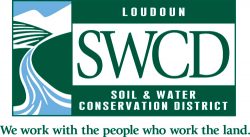Conservation at Home
Plant Native Trees, Plants and Grasses!
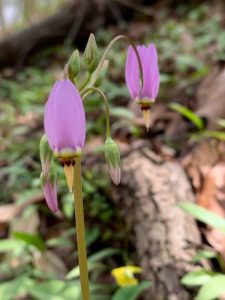
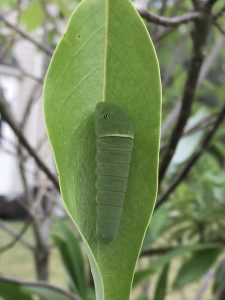
What defines “Native” when referring to plants and trees? The Virginia Department of Conservation and Recreation website offers a good description: “Native species are those that occur in the region in which they evolved. Plants and trees evolve over geologic time in response to physical and biotic processes characteristic of a region: the climate, soils, timing of rainfall, drought, and frost; and interactions with the other species inhabiting the local community. Thus native plants possess certain traits that make them uniquely adapted to local conditions, providing a practical and ecologically valuable alternative for landscaping, conservation and restoration projects, and as livestock forage. In addition, native plants can match the finest cultivated plants in beauty, while often surpassing non-natives in ruggedness and resistance to drought, insects and disease.” (www.dcr.virginia.gov/natural-heritage/nativeplants)
Natives will…
• Thrive in that region’s soil, moisture and weather conditions. This saves YOU money by requiring less watering and landscape maintenance in your yard!
• Stabilize soil and decrease storm water runoff. Sediment and storm water runoff are a significant source of pollution in our waterways. (Learn more here)
• Provide shelter and food to wildlife.
• Improve air pollution and climate change. Shrinking the size of your lawn (less to mow!) by replacing areas with natives results in less carbon from fossil fuels being burnt. They also remove (sequester) carbon from the air.
• Support the local food web of native butterflies, insects, birds and other animals by providing nectar, pollen, and seeds/nuts. Consider that in suburbia, over 90% of our land is now lawns. Lawns are desert wastelands, ecologically speaking, so they do not support our local food webs. Many plants found in suburban lawns are planted for ornamental purposes – they do not provide energetic rewards for their 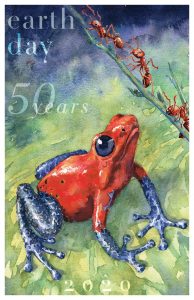 visitors and often require insect pest control to survive. For example, springtime brings baby birds require insects to live – they do not eat seeds. Also, many species of butterflies and moths require specific trees, grasses and plants to lay their eggs on, like milkweed for Monarch Butterflies. Most plants sold at big box retailers are not native, and many are treated with pesticides.
visitors and often require insect pest control to survive. For example, springtime brings baby birds require insects to live – they do not eat seeds. Also, many species of butterflies and moths require specific trees, grasses and plants to lay their eggs on, like milkweed for Monarch Butterflies. Most plants sold at big box retailers are not native, and many are treated with pesticides.
What should I plant and where can I find them?
Find out where to buy Native plants in Northern Virginia by clicking here.
Click here for a list of Native Plant Sales in Spring and Fall
List of links to native plant finders. Most of these only require a zip code to learn more about what is native in your area.
- Department of Conservation & Recreation – Piedmont natives guide
- National Wildlife Federation plant finder
- Lady Bird Johnson Wildflower Center plant finder
- Audubon Society
- Plant NOVA Natives downloadable plant guide for Northern Virginia
- Virginia Department of Conservation and Recreation plant finder
- US Fish & Wildlife guide to Chesapeake Bay Watershed Natives (that is Loudoun County!)
Learn more about landscaping with Natives:
Department of Conservation and Recreation
Plant NOVA Natives
US Forest Service
National Wildlife Federation Garden for Wildlife
Virginia Native Plant Society
Chesapeake Bay Native Plant Center
Doug Tallamy – (Professor of Entomology and Wildlife Ecology, University of Delaware)
Department of Energy and Environment
Department Of Forestry Native Tree ID guide
Backyard Conservation (NRCS)
National Park Service – Prince William Forest
Fall in love with nature by taking a walk!
To foster a love of earth in children (all humans actually!), simply take a walk outside. Being outside in nature has so many positive effects on us (Nature’s Impact on our well-being), and these great benefits can eventually inspire us to want to help our Earth!
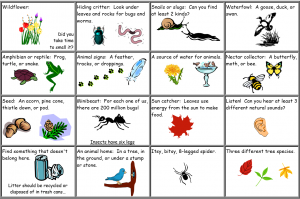
For younger kids – try a scavenger hunt! Make up your own, or find one online…this one is neat.
For older kids and adults, really dive in to what is around you by identifying plants and critters you find. There is an app for that! Seek (by iNaturalist) is excellent at ID’ing all things natural with a click of your smartphone camera, and the iNaturalist app allows you to record, catalog and share your natural discoveries.
Got Plastic Bags? Learn the proper way to recycle them. And going forward, just say no to plastic by shopping with reusable bags!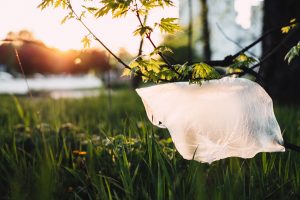
Most of our single-use plastic bags do not get recycled. They often end up in our landfills, landscapes or waterways. where it can take many years for them to break down. Most plastics are not biodegradable. Instead, they just keep breaking down into smaller pieces, eventually becoming microplastics. Aquatic creatures, wildlife and humans ultimately consume these particles with detrimental effects. YOU can help this problem by properly recycling plastic bags (as well as all other plastics). PLASTIC BAGS CANNOT BE RECYCLED WITH THE REST OF YOUR PLASTIC RECYCLABLES. Where can you recycle them? Most grocery stores and larger retail stores have plastic bag drop-off inside the store. (Loudoun County Recycling Info (Plastic Bag recycling included.) All types of plastic wrap and bags are accepted, including bags used for bread, dry cleaning, newspapers, reclosable/Ziploc bags, produce bags, bubble wrap, air pillows (found in shipped goods, make sure they are popped!), cereal bags, plastic wrap and more. Check your favorite grocery store or retail store to see if they accept plastic bags for recycling. What happens to the recycled plastic bags? Some are made back into plastic bags, while others are materials for composite wood – Check out the TREX Plastic Bag Recycling program which is helping out Loudoun County with our recycled plastic bags.
Practice the 3R’s – Reduce, Reuse and Recycle
Why? Watch what happens to a plastic water bottle below and consider the impact you would have if you practiced the 3 Rs at home.
TRY THIS CHALLENGE…while at home, see if you can go one day without generating any trash (which fills our landfill) by reusing and recycling. This can help make everyone around you more aware of what trash our daily routines generate, and consider ways on how we all can reduce it! Even food waste can be used for composting/vermicomposting, and healthy, untouched food can be donated to food banks.
Practicing the 3Rs decreases the amount of trash sent to landfills, incinerators and our waterways. It also conserves energy and natural resources (water, trees and minerals). The recycling industry creates jobs and supports American manufacturing, and individuals can save money.
Loudoun County offers information on WHAT can be recycled as well as HOW. Learn more about recycling paper, plastic, hazardous waste and residential recycling in your community.
Other tips:
- Choose products with less packaging.
- Drive less – walk or ride a bike more.
- JUST SAY NO to single-use plastics when possible. Plastic water bottles, bags and straws all have reusable versions, and consider whether you HAVE to have a straw…change your habits and simply drink directly out of your cup!
- Food waste can be reused for composting/vermicomposting, and healthy, untouched food can be donated to food banks.
- Donate goods you no longer need to local area donation organizations.
More good stuff:
Focus on reducing and reusing from the EPA
Check out this GROOVIN’ EARTH DAY song about the 3 Rs.
Video For kids…
